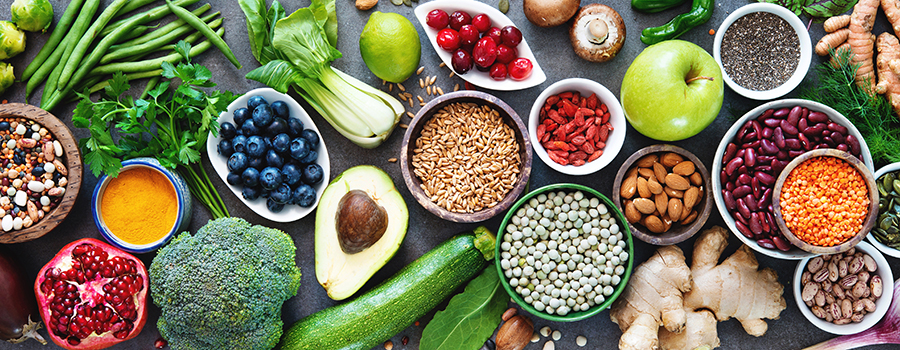 Getting enough fiber is important for overall health and well-being. Fiber can prevent or reduce constipation which is good for colon health. It may also help with weight loss and maintenance. Fiber has been shown to lower cholesterol levels, as well as reduce your risk of diabetes and heart disease.
Getting enough fiber is important for overall health and well-being. Fiber can prevent or reduce constipation which is good for colon health. It may also help with weight loss and maintenance. Fiber has been shown to lower cholesterol levels, as well as reduce your risk of diabetes and heart disease.
For individuals diagnosed with diabetes, fiber — particularly soluble fiber — can slow the absorption of sugar and help improve blood sugar levels. A healthy diet that includes insoluble fiber may also reduce the risk of developing type 2 diabetes.
The Institute of Medicine recommends at least 38 grams of fiber a day for men and 25 grams for women. Here are some great ways to boost your fiber intake:
Eat Veggies Before your Meals
Starting with a salad or vegetable soup before your entree meal has been linked to eating more fiber and fewer calories overall. Non Starchy vegetables are especially low in calories and high in nutrients, including fiber. Eating your vegetables before a meal is also a good way to avoid filling up on the ‘bad’ stuff.
Skip the Juices
Eating fruits and vegetables in whole form, rather than juice, ensures that you get more fiber and less sugar. Even though vegetable juices have high amounts of micronutrients, they are still stripped of fiber, leaving a concentration of carbs, specifically in the form of sugar. While vegetable juices have less sugar than fruit juices, they have far less fiber than you get from eating whole vegetables.
Snack on Whole Fruits
Fruit is an excellent portable snack food. High-fiber fruits include pears, apples and berries. All fruit delivers fiber, although some have significantly more than others. For instance, one small pear has five grams of fiber. Note: make sure to keep the skin on because this is where most of the fiber resides.
Include Plenty of Beans and Legumes in Your Diet
Legumes (beans, peas and lentils) are very rich in fiber, as well as protein, carbs, vitamins and minerals. One cup of cooked beans can deliver up to 75% of your daily fiber needs
Added bonus: replacing meat with legumes a few meals per week is linked to increased life span and a decreased risk of several chronic diseases. There are several ways to increase legume consumption:
- Use hummus and other bean dips instead of creamy dips.
- Add mashed or whole beans to ground beef and chili dishes.
- Top salads with cooked beans or lentils
Add Avocados
Avocados are rich in monounsaturated fats and fiber. They’re a healthy alternative to many other types of fat. The creamy, green flesh is not only rich in healthy, monounsaturated fatty acids — it’s also packed with fiber. Half an avocado has 5 grams of fiber. Try using avocado instead of butter, or use it to top salads and other dishes.
Snack on Nuts and Seeds, or Add them to Recipes
Seeds and nuts provide protein, healthy fats and fiber. They’re ideal for snacking or adding to recipes. An ounce of almonds has three grams of fiber. They’re also high in unsaturated fats, magnesium and vitamin. You can also use them in recipes to add extra nutrition and fiber to your meals.
By adopting some of the strategies mentioned above, you can increase your fiber intake to optimal amounts.